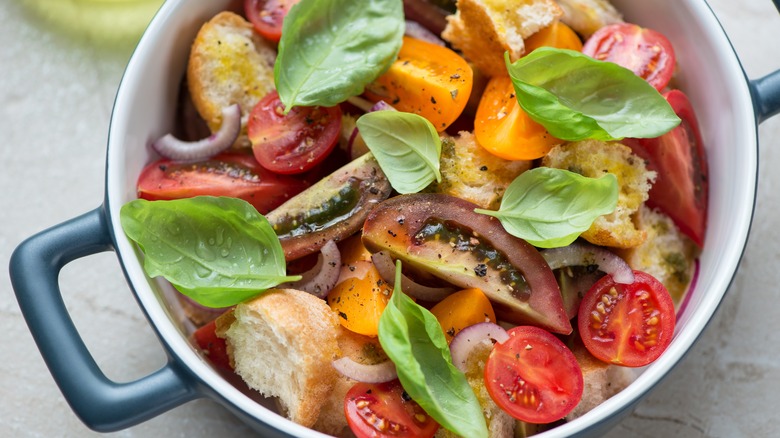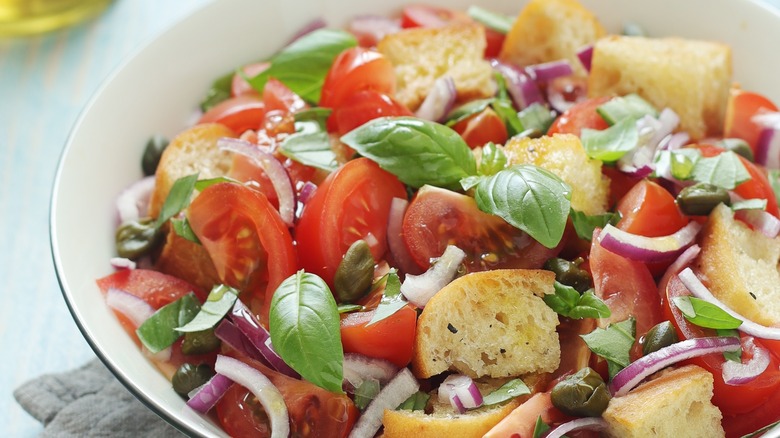The Case For Trying Fresh Bread In Your Panzanella Salad
Panzanella salad is a staple of Tuscan cuisine, dating all the way back to the Middle Ages. Made up of tomatoes, onion, basil, and old chunks of bread, it is a true testament to the Italian "cucina povera," or "poor kitchen" cooking philosophy, which prioritizes using food you already have available. Many might throw away bread that's going stale, but this philosophy encourages you to use that bread. Not only does this help you practice zero-waste in the kitchen, but using stale bread contributes to the texture of the dish, which you want to be chewy and not overly crunchy. Despite all the benefits of using stale bread, some argue that toasted fresh bread is actually a better alternative that saves you time and leaves you with an ideal texture.
Using toasted fresh bread may seem counterintuitive, especially when stale bread is at the heart of panzanella salad. However, there are some valid reasons to consider the switch. One reason is that it's a major time-saver. If you're craving panzanella and only have a fresh loaf of bread on hand, instead of waiting for it to get stale, you can pop some sliced chunks into the oven at 300 degrees Fahrenheit for 15 minutes. As long as you've got the other ingredients on hand, you can have it ready in under an hour.
A non-traditional twist on panzanella salad
The absolute best bread for a traditional panzanella is ciabatta, and if you decide to let your bread get stale, there are various levels of staleness that a loaf may reach over one to two days. The first level occurs if it has been wrapped up tightly: The bread will retain some of its excess moisture this way. However, this means that it might get soggy when added to the salad and dressed. The second level occurs if the bread has been left out in the open. In this case, if you let it sit for too long, it may be overly-tough. To fix this, you can sprinkle your bread chunks with cold water to moisten them.
Your stale bread should be a bit softer than a crouton, and it definitely shouldn't be soggy. The proper texture can be achieved if you don't let it get overly stale, but it's hard to reverse a loaf that's as solid as a rock. If you've never made panzanella before and are worried about a textural disaster, toasting fresh bread chunks is a good introduction to the dish. Just be sure you don't over-toast the bread; the inside should be soft with a crispy outside. While this isn't the traditional way of making a panzanella salad, there's no doubt that it will produce delicious results. Besides, you'll never get Italian food right if you keep overthinking it.

